Today we took a drive down the Romantic Road to visit a few more of the towns. Our plan was to mostly drive through and take pictures, but to stop if we saw anything we really wanted to check out or, more importantly, if we found some easy parking.
We decided to drive to the furthest south town first and then work our way back up to Rothenburg. Looking into what towns we hadn't visited yet, we chose to start with Harburg.
On the way to the city we passed a massive wood yard, converting trees into planks - the yard was massive!
Harburg is named from Harburg Castle, which was thought to mean Castle Above the Swamp.
 |
| They said I was daft to build a castle on a swamp! |
But the main problem with this theory is there are no swamps in Harburg, nor is there evidence of it ever having a swamp... It is also possible that the name derives from Hore which is the German word for Horn. This is possible as the castle sits on a hill that is roughly horn shaped.
Harburg was first mentioned in 1093 and the castle is dated to the 11th and 12 centuries.
 |
| One benefit of getting lost was finding this cool fountain |
 |
| One of the two-way roads we got stuck on and then had to turn around on. |
 |
| Finally on the way out.. well, after we'd moved to the side to let all the trucks past. |
After Harburg, we headed up to Nördlingen. The town was built in a meteorite crater, formed 15 million years ago and 25km in diameter. The meteorite was named the Nördlinger Ries and was predicted to have hit at a speed of 70,000 km/h. Microdiamonds are commonly found in the area as a result of the impact, which is predicted to have spread 72,000 tons of them.
The town was first mentioned in 898 and is famous for having a fully intact city wall (one of only three remaining in Germany - the others are Rothenburg and Dinkelsbühl) and for having the Saint George's Church Steeple, named "Daniel" which is 90m talll and made of stone from the meteor impact, containing shocked quartz. The town was also used in aerial shots at the end of the 1971 Willy Wonka & the Chocolate Factory. We also found that it was twinned with Wagga Wagga in NSW.
As well as "Daniel" we found a statue of Gerd Müller, who played football for Munich and was born in Nördlingen:
We then took a walk around the town, checking out some of the buildings:
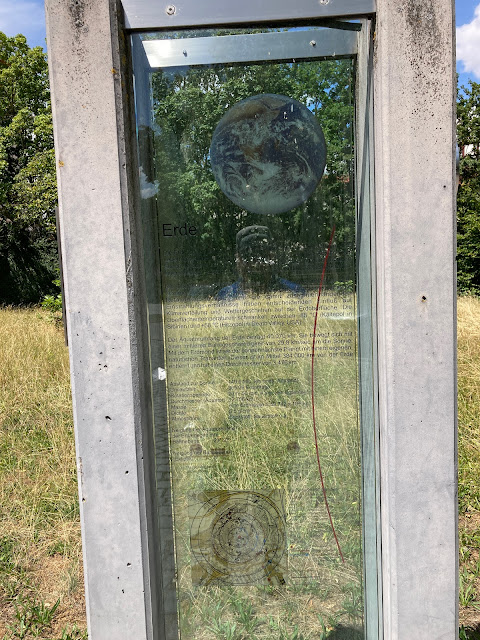 |
| This transparent and hard to read plaque is part of a scale solar system - this marker represents Earth |
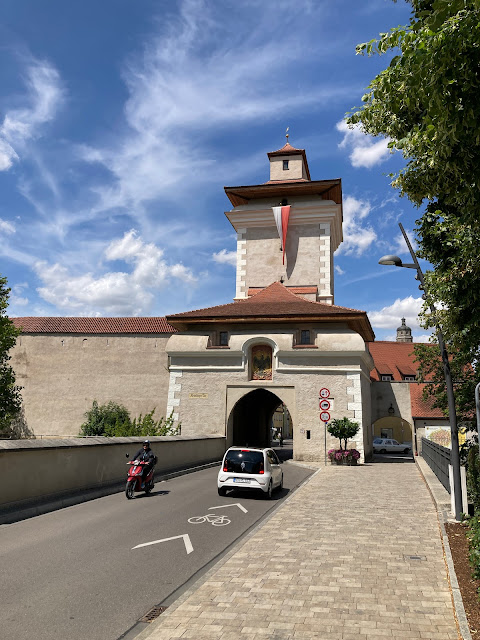 |
| Reimlinger Tor, the oldest of the five gates |
 |
| Kriegerbrunnen (Warrior's Fountain), 1902 |
 |
| Tanzhaus (Trading Hall) |
 |
| The sun marker for the solar system at the base of Daniel (Which someone has 'helpfully' added to the sign) |
 |
| The Friendship Tree |
 |
| Stairs to the Leihaus |
We then headed up onto the city walls at the Berger Tor gate.
The second was an archeological dig, where the construction work appears to unearthed some segments of wall or foundation that were being painstakingly cleared.
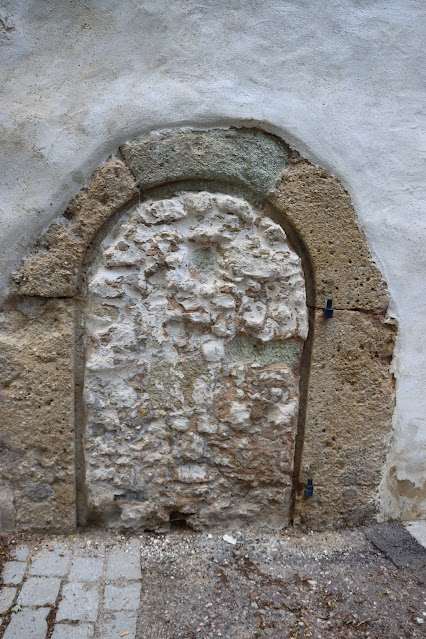 |
| Stoned up door in the walls |
 |
| Drei Frauen im Gesprach (1990) (Three women in conversation) |
After Nördlingen we continued north to Dinkelsbühl, the other walled city in Germany. We drove through the town and snapped a few photos as we went:
There appeared to be some sort of event on in the town as there were a large number of flags flying and stages being set up. This made it hard to find a park, so we drove through and onward.We then headed back to our apartment at Rothenburg ob de Tauber and headed into town. I shared the pictures in yesterday's post. This meant that we had visited all three towns in Germany with intact city walls in one day.
After a good night sleep we were ready to move on to Munich.


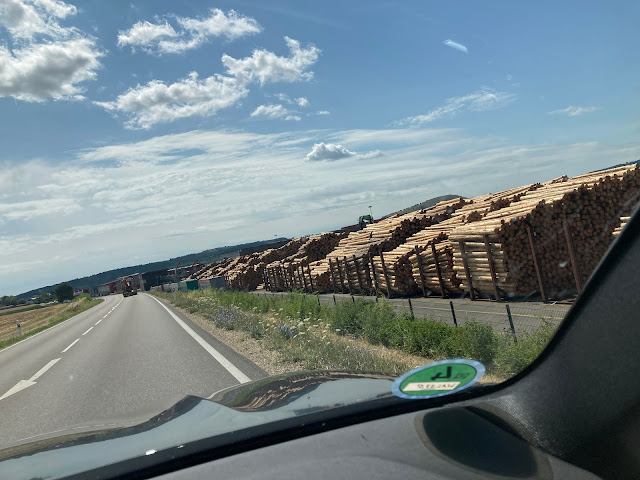



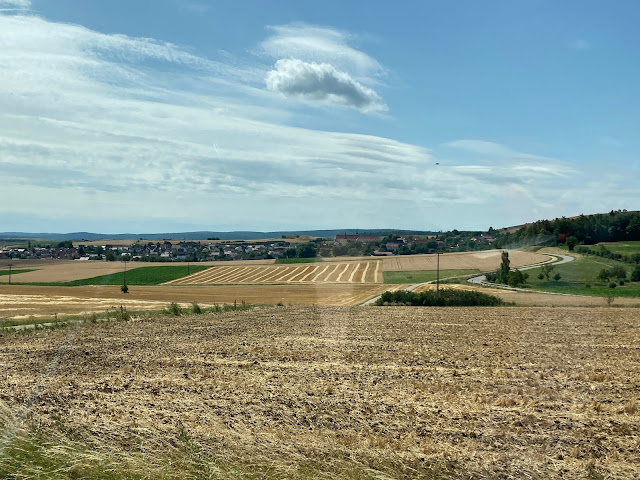



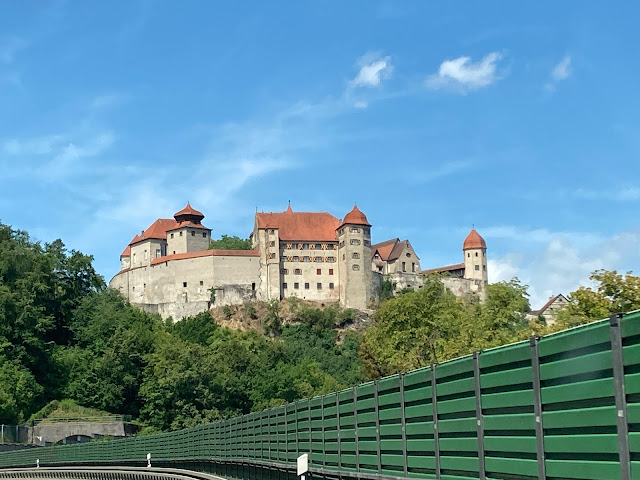













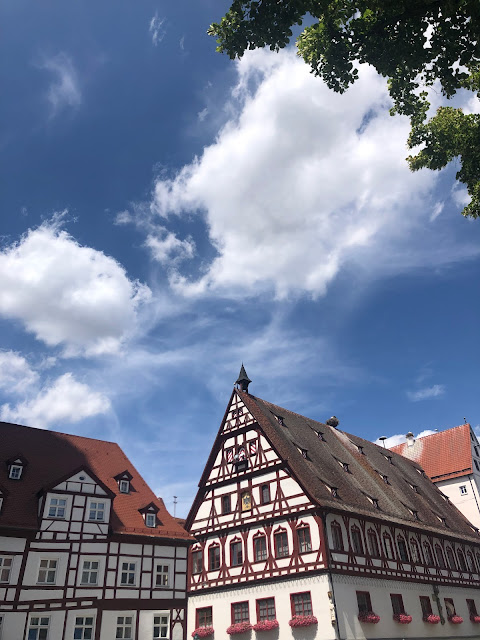























No comments:
Post a Comment